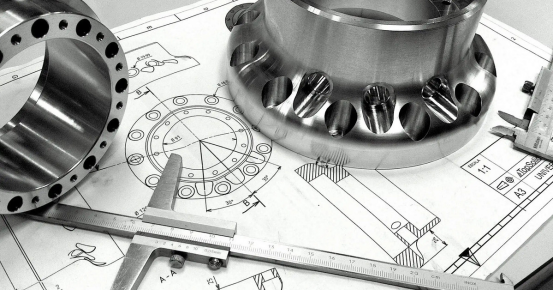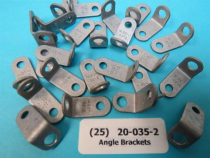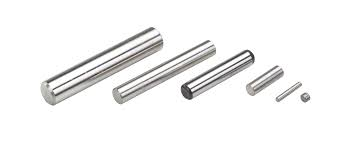Bilateral vs. Unilateral Tolerance: A Guide for Precision Engineering
 Jul 23,2025
Jul 23,2025

Suppose you make the parts of an engine for a car, and they are very slightly different from the required sizes. However, these slight differences in dimensions can cause serious issues and even lead to disasters. When a designer designs parts, he or she always need to leave some allowable variations in the sizes to ensure that parts perform accurately. These allowable variations are called tolerances. This article is a guide related to two major tolerance types: bilateral vs. unilateral. You will read how these tolerances affect a part's efficiency and how they are managed. So, let's start with an introduction to tolerance and its major types:

What Are The Three Types of Tolerances?
In simple words, tolerance means how much variation is acceptable, as long as it doesn't affect the efficiency of the respective part. Its three main types include:
- 1.Dimensional Tolerance
If a designer specifies allowable variations in part size, then you will say it is a dimensional tolerance. For instance, in a size of 20±0.01mm of shaft, 0.01 is the dimensional tolerance.
- 2.Geometric Tolerance
If allowable variations are given in the shape of the part, then you will say it is a geometric tolerance. For instance, an extra flatness is a geometric tolerance.
- 3.General Tolerance
It's a concept in designing and engineering to make specific dimensions easier in parts. General tolerance makes the workflow faster.
What Is a Bilateral Tolerance? What Is a Unilateral Tolerance?
Dimensional tolerance has two types, i.e. Unilateral and Bilateral. These are the commonly used tolerances in most engineering industries.
Bilateral Tolerance Explained
In engineering, you will have noticed that tolerances are often given as ± values, negative and positive values. It means allowable variation is acceptable in both negative and positive ways (can be increased or decreased from the exact value). This is called bilateral tolerance as the name itself gives us a clue, i.e. bi means two. If somewhere bilateral tolerance is given, such as 50 mm ± 0.2 mm, it means 49.8 and 50.2, both are acceptable.
Unilateral Tolerance Explained
You know uni means one, so unilateral tolerance means allowable variation in the size is acceptable in one way only, either positive or negative. In case of unilateral tolerance, you will see it will be written as 50 +0.1/-0mm, which means only 50.1 is accepted.
Equal vs. Unequal Bilateral
Equal tolerance means that in both directions, i.e. positive or negative, equal allowable variations are provided. For instance, 10 ± 0.01mm.
Unequal bilateral tolerance is used when different allowable variations are provided in both directions. For instance, 10 +0.03/-0.02mm.
Bilateral vs. Unilateral Tolerance: Key Differences
In the above sections, you read about bilateral and unilateral tolerances through their basic or general introduction. This section provides insights into key differences between unilateral and bilateral tolerances. If you know the major differences, you can effectively optimise the designs for functionality, cost and manufacturability.
1. Direction of Variation
This is the basic difference between bilateral and unilateral tolerances:
- Bilateral Tolerance:
If allowable variations are given in both positive and negative directions, then you will say it is a bilateral tolerance. It means a slight increase or decrease from the nominal value is acceptable. For instance, you will have often seen that on drawings for shafts or nuts, etc. The sizes are given in this way:
Diameter 10 ± 0.01mm, which means a 0.01 increase or decrease from the nominal value is acceptable.
- Unilateral Tolerance:
When allowable variation is given only in one direction, i.e. either positive or negative, you will say it as a unilateral tolerance. It is not as common as bilateral, but it is still used in critical applications where strict control over the dimensions is required.
This is given as 10 +0.01/-0mm. It means only 10.01 mm is acceptable.
H3 2.Impact on Part Functionality
Tolerance is always important when we talk about the functionality of a part.
- Bilateral Tolerance
As you know, it means tolerance is given in both directions, so it is used when a little variation is acceptable in terms of the part's functionality. For instance, in the case of nuts and bolts.
- Unilateral Tolerance
When the functionality is the utmost preference or it needs strict control over dimensions, the unilateral tolerance is used. For instance, in the case of bearings, unilateral tolerance is used.
3. Cost and Production Efficiency
Cost and production are directly linked to the factor of how much design is difficult to machine. Difficult designs lead to higher machining costs and lower production efficiency. Let's see how tolerance affects the cost and production efficiency.
- Bilateral Tolerance
As you know, the deviations in both directions are acceptable; this fact gives you a little freedom in machining. In the case of efficient tools, it is even easier to achieve. Tighter bilateral limits raise scrap risk if the tools are not precise. You should always check process capability (Cpk) to ensure consistent production within limits.
- Unilateral Tolerance
Since we have to be very careful to achieve unilateral tolerance, it increases machining costs. In this case, production may be reduced.
Bilateral vs. Symmetrical Tolerances
|
Type |
Definition |
Example |
|
Symmetric Bilateral |
Equal ± variation around nominal. |
50 mm ± 0.1 mm |
|
Unequal Bilateral |
Different +/− allowances (still bilateral). |
50 mm +0.2/-0.1 mm |
|
Unilateral |
Variation in one direction only. |
50 mm +0.3/-0 mm |
Where Bilateral vs Unilateral Tolerances Work Best
In this section, let us make you familiar with those industries which use bilateral or unilateral tolerances. You will learn the reason why that industry uses bilateral or unilateral tolerance.
Bilateral - Rotating Shafts and Bearing Fits
Automotive and industrial machinery use bilateral tolerances for rotating shafts and bearing fits (ISO 286 fits).
Bilateral tolerance allows slight variations like Ø25 mm ±0.05 mm in dimensions from the nominal, while not affecting the part's performance and keeping smooth rotation.
For interchangeable parts, ISO 286 standard fits rely on bilateral tolerances.
Bilateral - Aerospace Brackets
In aerospace, lightweight aluminium brackets are made using bilateral tolerances.

When you give allowable variations on both sides, at higher or colder temperatures, expansion or contraction respectively, are easily manageable. Bilateral tolerances make CNC machining cost-effective.
Unilateral - Press-Fit Dowel Pins
Unilateral tolerances are used in precision machinery and automotive industries to make dowel pins. Because unilateral ensures the pin never undersizes, maintaining a press fit. It helps prevent misalignment under vibration.

Unilateral - Injection-Molded Plastic Clips
Unilateral tolerance is used in consumer electronics and medical devices to make snap-fit plastic fits. Because it ensures clips never exceed max size, it accounts for shrinkage in moulded plastics.
How Bilateral and Unilateral Tolerance Interacts with GD&T
Bilateral and unilateral tolerance are applied through a proper standard, which is GD&T(Geometric and Dimensioning and Tolerancing). GD&T is a helpful standard not only for size but also for forms, orientations, run-outs, etc., as well.
Convert Plus/Minus to GD&T
You can control variations by translating unilateral and bilateral tolerances into GD&T. For instance, if you see bilateral tolerance (50mm±0.01 mm):
GD & T Equivalent:
- Size tolerance: 50mm; no GD&T is needed if only size matters
- Form Control: add flatness if you think surface precision is critical.
In case of Unilateral Tolerance:
25+0.01/-0 is equivalent to GD&T:
- Position Tolerance:⏊ | 0.1 | A, controls shaft alignment.
- Size + Bonus Tolerance permits extra clearance if the feature shifts within limits.
Position Control for Holes
For allowable movement in both directions, slotted holes often use bilateral tolerance. For instance, in GD&T, it is written as + | 0.2 | A | B.
Unilateral tolerance is used for press-fit holes, which ensures the hole never goes beyond the allowed dimension. In GD&T, it is written as + | 0.1⬆| A.
Profile Control for Surfaces
Bilateral Tolerance
- ⌓ | 0.4 | Ameans ± 0.2mm from the nominal dimension.
Unilateral Tolerance
- ⌓ | 0.4⬆ | Ameans surface can deviate only outward.
Design Tips for Choosing Bilateral or Unilateral
You need to choose between bilateral and unilateral tolerance after analysing important points such as function, cost, material and process effects. Let's see how these parameters affect selecting unilateral or bilateral tolerance:
Function vs. Cost Balance
|
Tolerance Type |
Best For |
Trade-Off |
|
Bilateral |
Adjustable assemblies such as gears, brackets |
Looser control = lower cost |
|
Unilateral |
Interference fits, e.g. bearings, dowels |
Tighter control = higher machining cost |
Material and Process Effects
You can choose unilateral tolerance for casting/moulding of plastic materials because you can predict shrinkage. For instance, if you make plastic clips, unilateral tolerance will be +0/-0.1mm.
For machined parts, you should go for bilateral tolerances.
CNC Machining Strategies to Achieve Tight Limits
In this section, some important tips are shared with you which can be helpful to achieve tighter tolerance in CNC machining.
Stable CNC Setup
If you use a stable CNC setup, then precision can be achieved because vibrations will be restricted. The stable CNC setup includes:
- Employ soft, machinable jaws
- Use doowel-located fixtures
- Balance toolholder assemblies
- Verify machine levelling
CNC Milling Tips
If you need ±0.05 or narrower tolerance, then try to use these proven methods:
Roughing Strategies:
- Leave 0.3mm stock for finish passes instead of the standard 0.5mm.
- Use the climb specifically to prevent tool deflection.
- Always use high-efficiency tools.
Finishing Approaches:
- Apply spring passes.
- Optimise step-overs. For instance, 5% of the tool diameter to achieve Ra 0.8μm
- For the last two passes, reduce your speed by 30%.
Tool Wear Compensation
Use automated tools because automated adjustments combat dimensional drift.
|
Method |
Accuracy Gain |
Best For |
|
Laser pre-setter measurements |
±0.005mm |
High-volume production |
|
In-cycle wear monitoring |
±0.01mm |
Unilateral tolerance parts |
|
Adaptive feed adjustment |
±0.02mm |
Hard milling (HRC 50+) |
In-Process Probing and Adaptive Control
In-process probing is an advanced feature in modern CNC machines, where you can measure tolerances or inspect parts' dimensions in real-time while machining. The adaptive control feature adjusts cutting speeds or tool movements according to the requirements.
Other Types of Engineering Tolerance
There are not just two types of tolerances that engineers use. In this section, you will study several other tolerances which engineers use:
Limit Size Tolerance
Often, this tolerance is combined with bilateral or unilateral tolerance. It specifies absolute max. or min. Values to guarantee assembly fit.
Form Tolerance
You will use form tolerance with size tolerance to control the shape of features independently. We see three main things in form tolerance:
- Straightness: Keeps axes within the tolerance zone.
- Flatness: Ensure the surface doesn't warp beyond acceptable limits.
- Cylindricity: Used for complete roundness along a shaft.
Orientation Tolerance
A product has many features which are connected through angles. So, this tolerance manages angular orientations:
- Parallelism
Keeps axes aligned within a tolerance zone.
- Perpendicularity
You will use it to ensure 90° relationships. For instance, in mounting flanges.
Surface Roughness Tolerance
This type of tolerance is used when the surface needs enhanced fatigue life, reduced friction and improved sealing. It specifies micro-finish requirements such as Ra 1.6μm.
Fit Tolerance
You can use this type of tolerance for mating parts such as shafts and holes. It defines the degree of clearance or interference between mating parts.
- Clearance Fit
For smooth sliding for parts like bearings, use bilateral tolerance.
- Transition Fit
A controlled interference for semi-permanent assembly
- Intereference
To create permanent press-fits for parts like gear hubs, use unilateral interferences.
Choosing the Right Tolerance Scheme
In this section, let us help you in choosing the right tolerance scheme for your project:
Decision Flowchart: Bilateral, Unilateral, or GD\&T
If you are confused about selecting the right tolerance, simply do these yes/no questions, and you will get the answer ultimately:
- Does your part require strict control only in one dimension?
If yes, then simply go for unilateral tolerance. And it is no, choose bilateral, simple.
- For you, is the feature's orientation as critical as its size?
If yes, choose GD&T, and if no, choose bilateral tolerance.
- Will this part mate with the other part in the application?
In case of yes, choose ISO 286 fit tables; otherwise, bilateral is fine to select.
Common Pitfalls and How to Avoid Them
|
Mistake |
Consequence |
Solution |
|
Using bilateral when unilateral is needed |
Parts exceed critical limits (e.g., oversized shafts in bearings) |
Apply unilateral tolerances to enforce one-sided limits |
|
Ignoring GD&T for complex features |
Misaligned holes or warped surfaces |
Add position/flatness controls alongside size tolerances |
|
Over-tolerancing (±0.01mm everywhere) |
3-5x higher machining costs |
Loosen non-critical tolerances; use GD&T for key features |
|
Mismatching standards (ISO vs. ASME) |
Supplier confusion and rejected parts |
Specify the standard (e.g., "Per ASME Y14.5-2018") |
Relevant Standards
- ISO 286, Size Tolerances
It tells you hole/hole fits using a bilateral tolerance zone. Its latest version is 2020 and refits tolerances for modern CNC capabilities.
- ASME Y14.5
Its latest version is 2018, which has added clarity on dynamic profiles and composite tolerances.
Conclusion
Tolerance is an important factor for the successful application of any part. Its commonly used types include bilateral and unilateral tolerances. Bilateral tolerance allows allowable variations in both positive and negative dimensions, while unilateral tolerance provides allowable variation in only one dimension. Always check functionality, cost, manufacturing method, material, etc., before selecting any tolerance type. Use always updated standards for the respective tolerance guide.
If you are in search of the best manufacturers who can provide you with strictly controlled tolerances or precision-engineered parts, come to TUOFA. TUOFA is a Chinese-based manufacturing industry, equipped with the most advanced tools, which ensures that it can meet any kind of tolerance in the parts.
FAQs
Are bilateral tolerances compatible with position control?
Yes, you can use it. If bilateral tolerance and position control work together, it means size can vary a little, but location must stay precise.
What happens if I mix bilateral and unilateral limits on one drawing?
Yes, you can mix on one drawing but mention them clearly. Such as, add notes like “use 0.1/-0 for shafts and ±0.2 for holes”.
 Tel/WeChat:
Tel/WeChat:  Email:
Email: 
 Home
Home
 CATPart Files for CNC Machining: Various Format Guide & Conversion
CATPart Files for CNC Machining: Various Format Guide & Conversion 







